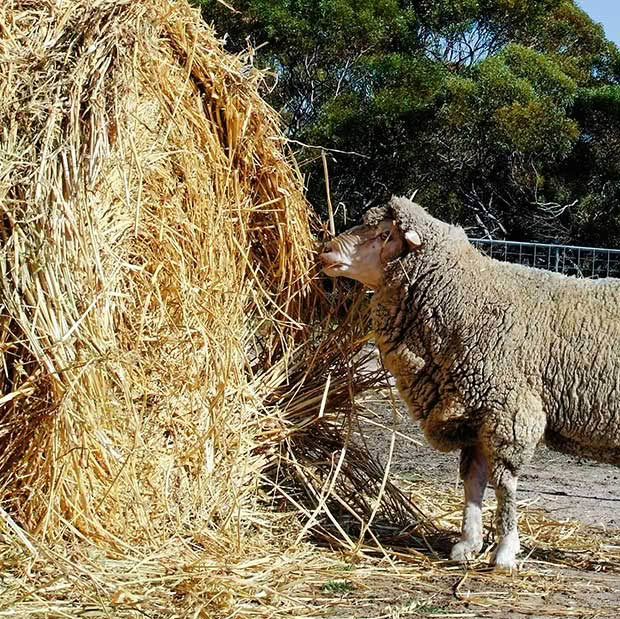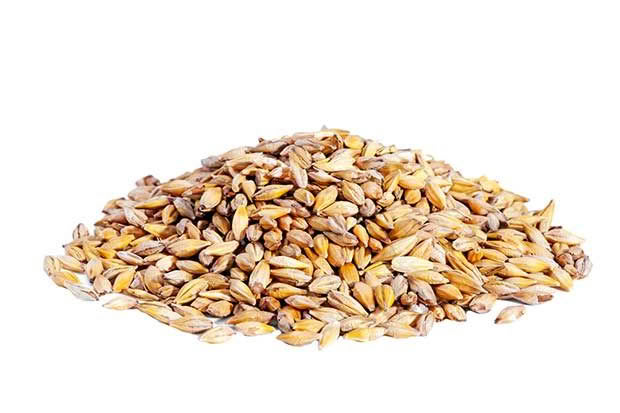9 tips for feeding livestock during a drought

More hot, dry weather is forecast and that’s going to have ongoing implications for your livestock, especially if you are relying on supplements to feed them through to when pasture starts regrowing.
If you’re dealing with burnt-off pasture, a high weed seed burden and compacted soil, you might not get pasture of any quality for another month or perhaps two.
The supplement feed options for most block owners tend to be silage, baleage, or hay, and possibly some grain or grain-based supplements, eg multinuts. If you’re going to feed grain, it’s going to be more expensive, but that may be a cost you’re happy to bear, or one you can recoup with the birth of healthy calves or lambs. Adding grain to the diet of your livestock is something to take care with.
For adult beef cattle in good condition, a long dry summer isn’t as much of an issue if they are getting the basics of a good diet although they probably won’t grow or put on extra condition. But for a milking cow or a pregnant sheep or goat, nutritious feed is a priority.
The most important aspect of nutrition that goes missing over a long, dry summer is protein. Dietary crude protein levels will be at their lowest – 12% or less – and will begin to limit an animal’s ability to produce meat or milk during a hot dry summer. A lack of protein also begins to affect the efficiency of microbes in the rumen so they can’t do their job as well, meaning the animal begins to lose the ability to take nutrients out of their feed.
It’s easy to find out how much protein is in a ready-made supplement when you can just read the ingredients label on the bag. It becomes more difficult to work out protein and overall nutrition when you are feeding out hay or silage.
HAY

1. The best hay contains mostly leaf, with some fine stalks, and the leaves should be green, not yellow.
2. Mostly stalky, yellow hay provides fibre and almost nothing else nutritionally so you are going to need some other kind of supplement, eg grain, specialist feed.
3. Lucerne (alfalfa) hay/chaff is high in protein and makes a good added extra to normal pasture hay.
4. Feed hay first to help prevent gorging and stock losses.
5. Weigh hay bales to give you a better estimate of feeding levels – stand on your scales holding a bale, then take away your weight.
GRAINS

1. Don’t feed out more than 500g of grain per animal per day.
2. Ruminants, eg cattle, sheep, goats cannot be maintained on grain alone – they also need to be eating pasture stubble, straw or hay to help produce enough saliva which aids in breaking down feed so they can gain nutrients from it, and to neutralise acid in the rumen.
3. If grain constitutes a high proportion of the ration, mix 15g of sodium bicarbonate (baking soda) per 1kg grain to help offset the effects of grain overload – bicarb can help to neutralise the acid in the rumen.
4. Oats, barley or ryecorn fed to sheep do not need to be processed for effective digestion. Whole grain is better as it stimulates chewing and addition of saliva, and breaks down less rapidly in the rumen, reducing the risk of acidosis compared with feeding processed grains. Cattle require processing of wheat, barley and ryecorn to maximise utilisation of grain. However, oats generally do not need processing.
Source: Extreme Dry Management and Planning Toolkit
Love this story? Subscribe now!
 This article first appeared in NZ Lifestyle Block Magazine.
This article first appeared in NZ Lifestyle Block Magazine.
